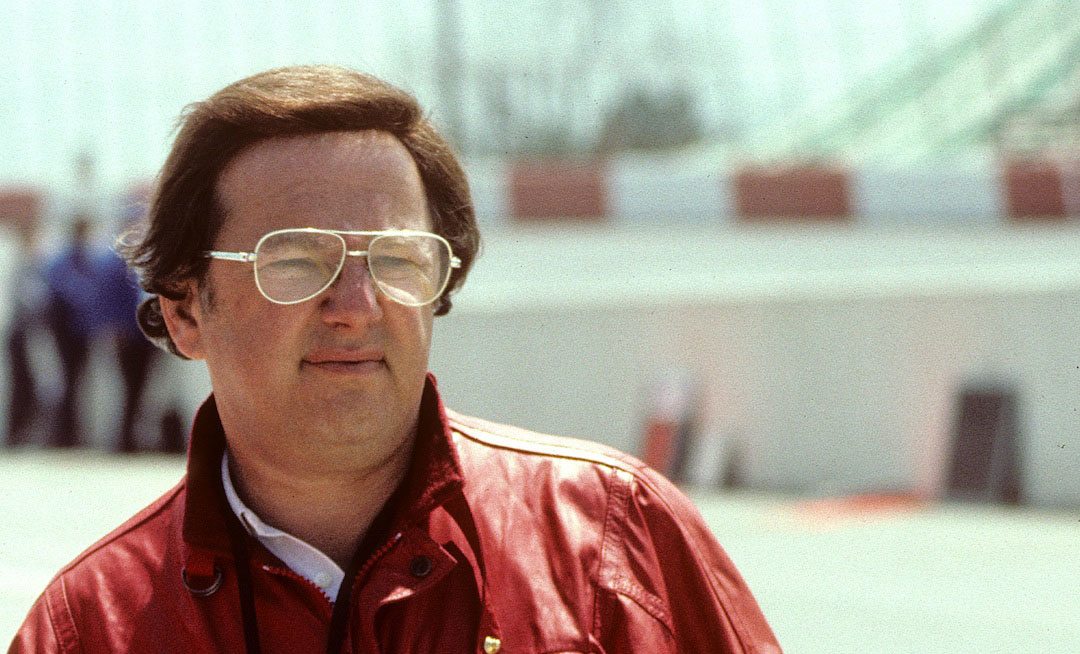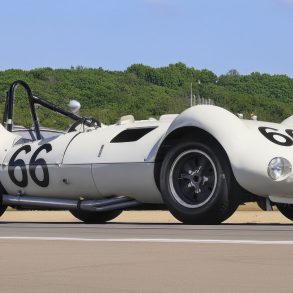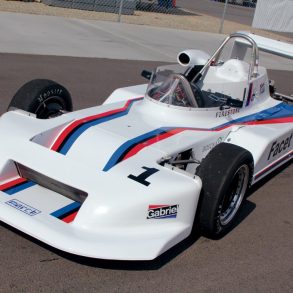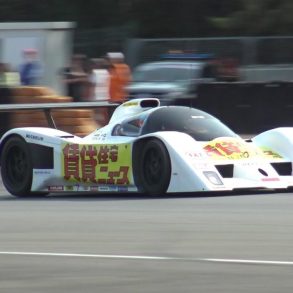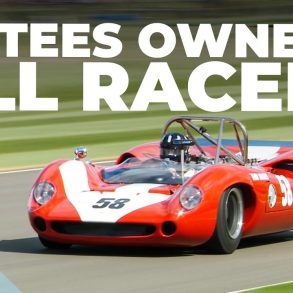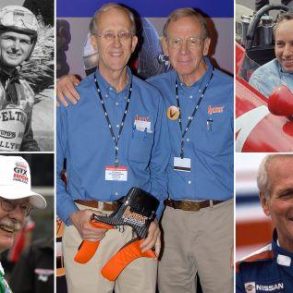News emerged late last week that prominent racing entrepreneur Carl Haas had died on June 29, at age 86, from complications of Alzheimer’s disease. Tributes poured in from around the world with the news, as Haas had been a major player in both the American and international racing communities for half a century.
Racing was Carl’s only business, and for decades he was the exclusive American importer for both Lola cars and Hewland gearboxes, as well as at various other times handling the Elva, McLaren, Reynard and Swift marques through his suburban Chicago enterprise, Carl Haas Auto. He also served for many years on the Board of Directors for the Sports Car Club of America, and as its Chairman for four years while guiding the Club into the modern era. He was also a long time board member for Elkhart Lake’s Road America, and worked as promoter of the Milwaukee Mile for 10 years.
Shortly after a friend took him to the road races at Elkhart Lake in 1951, Carl began racing himself, satisfying his new passion with first an MG TD and later a Porsche Spyder. After proving himself a winner as a driver he ultimately started Haas Auto to capitalize on his own and others’ interest in the sport. Upon stepping out of the cockpit he started his own racing team in 1967, contesting both the United States Road Racing Championship and the brand-new Can-Am series, fielding Lolas for a list of drivers that included Masten Gregory, Chuck Parsons, Peter Revson, Jackie Stewart, David Hobbs, Brian Redman, Patrick Tambay, Alan Jones, Jacky Ickx and Mario Andretti.
With the demise of the original Can-Am series Haas turned his attention to Formula 5000 where, in partnership with Jim Hall, and with Brian Redman as their driver, they collected three consecutive championships before adding four straight during the early years of the subsequent single-seat Can-Am series with Tambay, Jones and Ickx driving. During that time Carl also worked with Hall to field a Lola T500-Cosworth Indycar for Al Unser, who proceeded to win the 1978 Indy 500 as well as the Pocono and California 500s to become the only driver ever to win American racing’s 500-mile Triple Crown.
Although he eventually became known primarily for his successes in Indycar racing, the Lola connection meant Haas also sold cars for many of the sport’s junior categories, including Formula Ford, Sports 2000, Super Vee and Formula Atlantic, as well as Can-Am, F5000 and Indycars.
It was his partnership with actor Paul Newman to field Indycars for Mario Andretti that moved Haas truly into “the big time.” He and Newman had been competitors in the single-seat Can-Am series, where Newman complained that Carl would deliver his racecars late and over budget, but when he got a call proposing they form a one-car Indycar team for Andretti, Newman’s only question was: “Where do you want to meet and when?”
That enterprise hit the track for the 1983 PPG Indy Car World Series, and Mario fittingly scored its first victory at Road America, then followed up with a second win on the modified oval at Caesars Palace in Las Vegas later in the year. Six wins brought Mario his fourth Indycar National Championship in 1984, and five years later the team was expanded to a second car for Mario’s son, Michael, who proceeded to win the PPG Cup for the team in 1991. Further championships followed with Nigel Mansell in 1993, Cristiano da Matta in 2002 and Sebastien Bourdais, who won four consecutive titles between 2004 and 2007. All told, Newman/Haas entries won 107 Indycar races, a total that ranks second only to Penske Racing on the all-time list.
The hallmark of the Newman/Haas organization was that it assembled the top talent from within the sport and nurtured it in a family atmosphere so that loyalty and performance went hand in hand. Whatever they needed, Carl got it for them, and even though he could surely be a hard-nosed businessman, he was also completely conversant with the time-honored racing tradition of doing what has to be done.
Lest we forget, at the height of his short-lived sponsorship from Beatrice, Haas also tackled Formula One, with Adrian Newey and Ross Brawn among his engineering staff and Teddy Mayer and Tyler Alexander running the show, but the program folded when the backing vanished. He entered NASCAR in partnership with former Ford racing boss Mike Kranefuss, but that effort was also necessarily brief.
My favorite personal memory of Carl came one year at Road America, and illuminated just how superstitious he was. He’d long been known for “blessing” his cars before every race, laying his hands upon various components to will them to perform, and in those days the pit boxes along the front straight were identified by numbers painted on the pavement. Somehow, Mario’s Newman/Haas Lola had ended up in stall 13, but Carl was having none of it. Before Friday morning’s opening practice session began, there he was in the pit lane, kneeling down with a can of spray paint, X-ing out the number 13 and replacing it with 12A.
Carl Haas carved a broad niche for himself in the world of motorsports, and the man with the trademark cigar will be missed by many. Vintage Racecar extends its deepest sympathies to Carl’s wife and business partner Berni, and to his countless friends throughout the sport. Anyone wishing to memorialize Carl Haas is requested to do so with a gift to the Alzheimer’s Association at 8430 W. Bryn Mawr, Suite 800, Chicago, IL 60631 (847) 933-2413.


